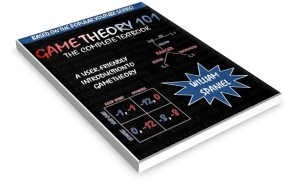In signaling games, the informed actor makes a move that an uninformed actor must respond to. This makes signaling games much more difficult to solve than screening games. With screening games, the informed party did not have to think through what sort of message its action would convey, as no one moved after it. With signaling games, the informed party must consider whether its strategy will expose its type. Sometimes this may be desirable. Sometimes it may not. But the implications mean that we must give more consideration to the uninformed actor’s beliefs than we have before.
Takeaway Points
- There are three sub-classes of perfect Bayesian equilibria in signaling games: separating strategies, pooling strategies, and semi-separating or partially-pooling strategies.
- In a separating equilibrium, each type of the informed actor takes a different action. Thus, the types “separate” themselves. This is the easiest case to check because the uninformed actor obtains complete information on the equilibrium path of play due to that separation.
- In a pooling equilibrium, each type of the informed actor takes the same action. Thus, they “pool” together. This is more complicated because it leaves some strategies off the equilibrium path of play. Perfect Bayesian equilibrium therefore provides no guidance on what the beliefs should be for those off-the-path information sets, meaning we have to work hard to consider all possible beliefs.
- Semi-separating and partially-pooling strategies are the same thing. How someone refers to them is a taste-based. I will call them semi-separating strategies for the rest of the course.
- In a semi-separating equilibrium, one type plays a pure strategy and another type mixes, with one of the strategies within the mixture being what the first type chooses. Thus, when the second type chooses the other strategy, the opponent knows which type it is facing; when the second type chooses the original strategy, the opponent is unsure which type he is facing. However, he can update his belief via Bayes’ rule. As such, semi-separating strategies provide some information.
- Semi-separating equilibria provide the most strategic interplay but are also the most complicated because they require deriving many indifference conditions to sustain the mixing.

